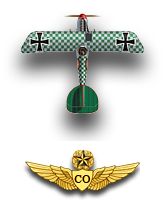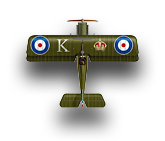
Originally Posted by
Niclas

Been using overlapping bases for collisions. Base overlapping center peg may be a better option though, may start using that. I guess the reasoning is that otherwise you're considered able to that last second adjustment?
I wonder - Should collision (or even near miss, as in base overlap but not base to peg) affect the next move? - Only straight, sharpest possible turn away, random move card?
For me, switching to base to peg and adding some sort of after effect would mean less damage (crashes) from collision but still a bit of extra excitement.
/Niclas




 Reply With Quote
Reply With Quote










 G'day Dan! My take on that situation would be not on that card. The pilot would be so unsettled by the collision he would not be able to draw a bead on an enemy aircraft. O.K. to shoot on the next card.
G'day Dan! My take on that situation would be not on that card. The pilot would be so unsettled by the collision he would not be able to draw a bead on an enemy aircraft. O.K. to shoot on the next card.

 No it is not official Shawn. Just a way of creating order out of chaos.
No it is not official Shawn. Just a way of creating order out of chaos.


Bookmarks